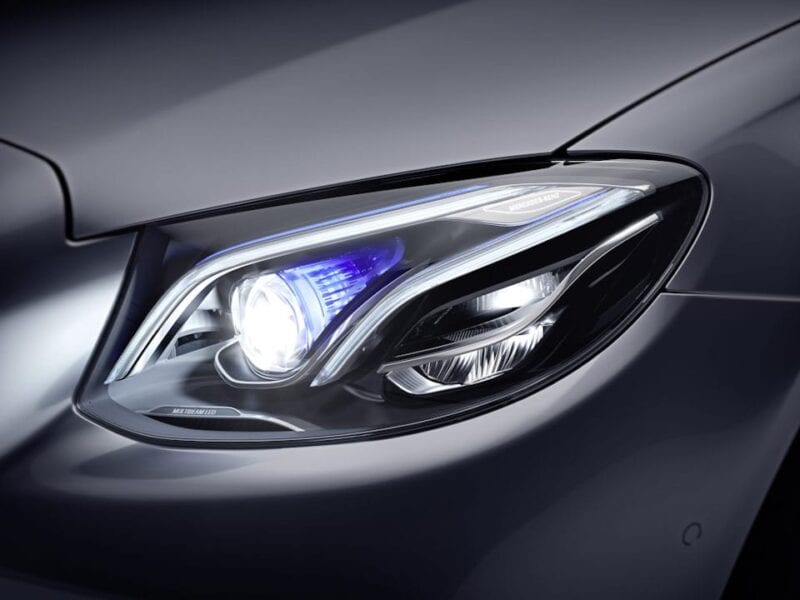
What you need to know about car lighting?
Content
Car lighting
Automotive lighting. The first source of automotive light was acetylene gas. Pilot and aircraft designer Louis Blériot suggested using it for road lighting in 1896. Placing acetylene headlights is a ritual. First you must open the faucet on the acetylene generator. So the water drips onto the calcium carbide. Which is at the bottom of the trunk. Acetylene is formed by the interaction of carbide with water. Which enters the ceramic burner through the rubber tubes that are the focus of the reflector. But he must stop for no more than four hours - to reopen the headlight, clean it of soot and fill the generator with a new portion of carbide and water. But the carbide headlights glowed with glory. For example, created in 1908 by the Westphalian Metal Company.
Lenses for Car Lighting
Such a high result was achieved through the use of lenses and parabolic reflectors. The first incandescent car was patented in 1899. From the French company Bassee Michel. But until 1910, carbon lamps were unreliable. Very uneconomical and requires heavy batteries with larger sizes. Which also depended on recharging stations. There were no suitable car alternators with suitable power. And then there was a revolution in lighting technology. The thread began to be made of refractory tungsten with a melting point of 3410 ° C. The first production car with electric lighting, as well as an electric starter and ignition was made in 1912 by the Cadillac Model 30 Self Starter.
Automotive Lighting and Blinding
Blinding problem. For the first time, the problem of dazzling oncoming drivers arose with the advent of carbide headlights. They fought her in different ways. They moved the reflector, removing the light source from its focus, for the same purpose as the burner itself. They also placed various curtains and blinds in the path of light. And when an incandescent lamp was lit in the headlights, during oncoming trips an additional resistance was even included in the electric circuit, which reduced the glow. But the best solution was proposed by Bosch, who in 1919 created a lamp with two incandescent lamps. For high and low beams. At that time, headlight glass coated with prismatic lenses had already been invented. Which deflects the lamp light down and to the side. Since then, designers have faced two opposing tasks.
Automotive Lamp Technology
As much as possible to illuminate the road and to prevent blinding oncoming drivers. You can increase the brightness of incandescent lamps by raising the temperature of the filament. But at the same time, tungsten began to evaporate intensively. If there is a vacuum inside the lamp, tungsten atoms gradually settle on the bulb. Coating inside with a dark coating. A solution to the problem was found during the First World War. Since 1915, the lamps have been filled with a mixture of argon and nitrogen. Gas molecules form a kind of barrier that prevents the evaporation of tungsten. And the next step was already taken at the end of the 50s. The flask was filled with halides, gaseous compounds of iodine or bromine. They connect evaporating tungsten and return it to a spiral.
Car lighting. Halogen lamps
The first halogen lamp for a car was introduced by Hella in 1962. The regeneration of an incandescent lamp allows you to increase the operating temperature from 2500 K to 3200 K. This increases the light output by one and a half times, from 15 lm / W to 25 lm / W. At the same time, the lamp life doubles, heat transfer decreases from 90% to 40%. And the size has become smaller. And the main step in solving the problem of blindness was made in the mid-50s. In 1955, the French company Cibie proposed the idea of asymmetric near-beam distribution. And two years later, asymmetric light was legalized in Europe. In 1988, using an computer, it was possible to attach an ellipsoidal reflector to the headlights.
The evolution of car headlights.
The headlights remained round for years. This is the simplest and cheapest form of parabolic reflector to manufacture. But a gust of wind first blew out the headlights on the car's fenders and then turned a circle into a rectangle, the 6 Citroen AMI 1961 was equipped with rectangular headlights. These headlights were more difficult to manufacture, required more space for the engine compartment, but together with the smaller vertical dimensions, they had a larger reflector area and increased luminous flux. In order for the light to shine brightly at a smaller size, it was necessary to give the parabolic reflector even deeper depth. And it was too long. In general, conventional optical designs are not suitable for further development.
Car lighting. Reflectors.
Then the English company Lucas suggested using a homophocal reflector, a combination of two truncated paraboloids with different focal lengths, but with a common focus. One of the first new products tested at the Austin Rover Maestro in 1983. In the same year, Hella introduced the conceptual development of triaxial headlamps with an ellipsoidal reflector. The fact is that an ellipsoidal reflector has two foci simultaneously. The rays emitted by a halogen lamp from the first focus are collected in the second. Where do they go to the condenser lens. This type of headlights is called spotlights. The efficiency of an ellipsoidal headlamp in low beam mode is 9% higher than parabolic. Conventional headlights emit only 27% of the estimated light with a diameter of only 60 millimeters. These lights were designed for fog and dipped beam.
Car lighting. Three-axis headlights
And the first production car with triaxial headlights was the BMW Seven at the end of 1986. Two years later, ellipsoidal headlights are just great! More precisely Super DE, as Hela called them. This time, the reflector profile was different from a purely ellipsoidal shape - it was free and designed in such a way that most of the light passed through the screen responsible for the low beam. Headlight efficiency increased to 52%. Further development of reflectors would be impossible without mathematical modeling - computers allow you to create the most complex combined reflectors. Computer modeling allows you to increase the number of segments to infinity, so that they merge into one free-form surface. Take a look, for example, at the "eyes" of such cars as Daewoo Matiz, Hyundai Getz. Their reflectors are divided into segments, each of which has its own focus and focal length.
